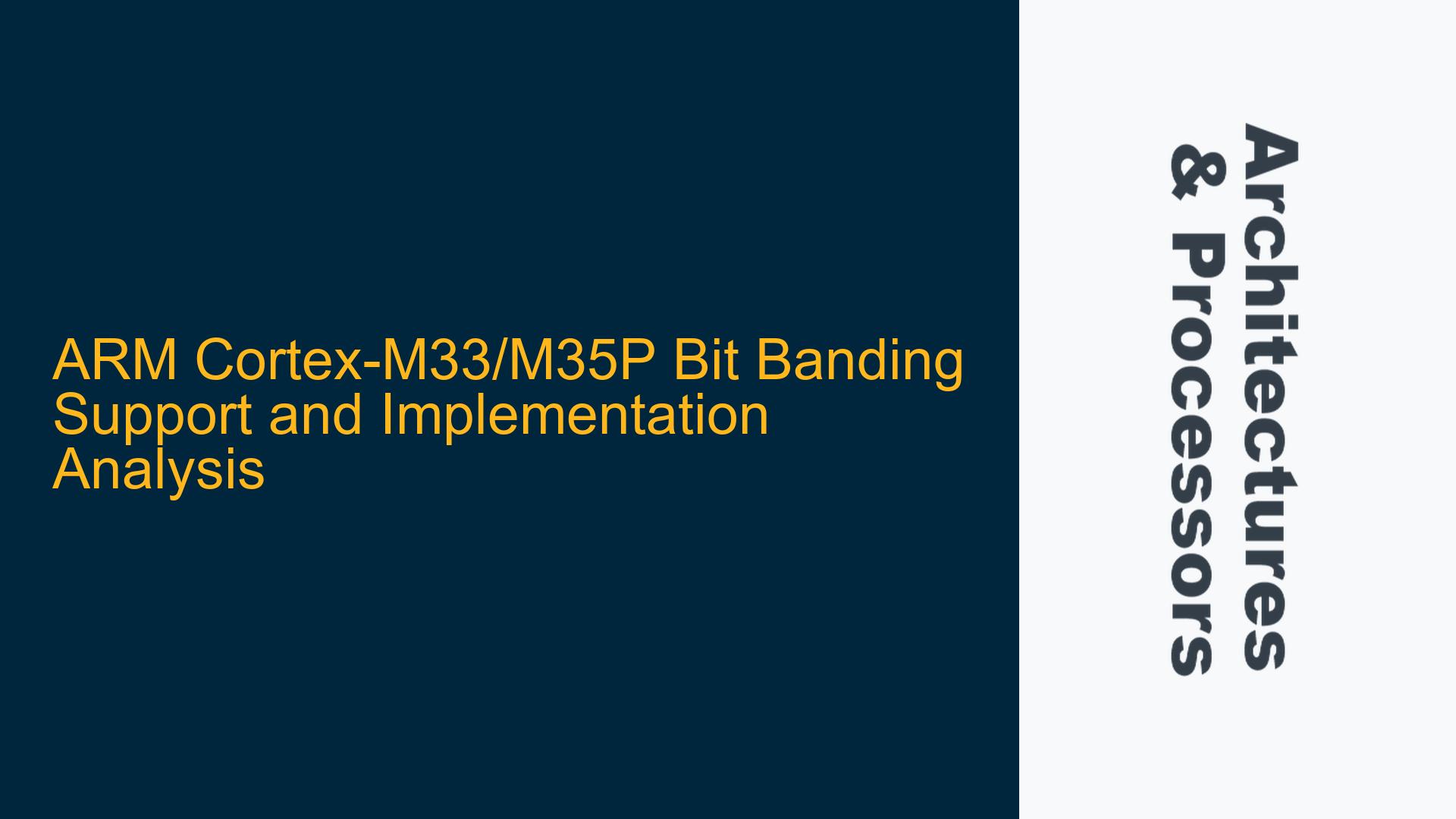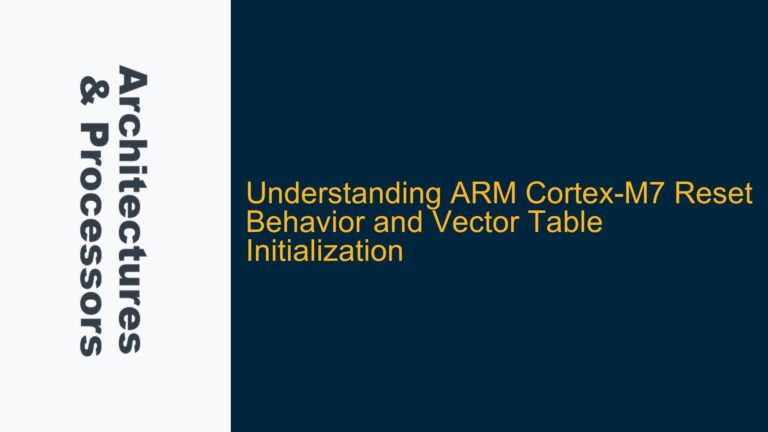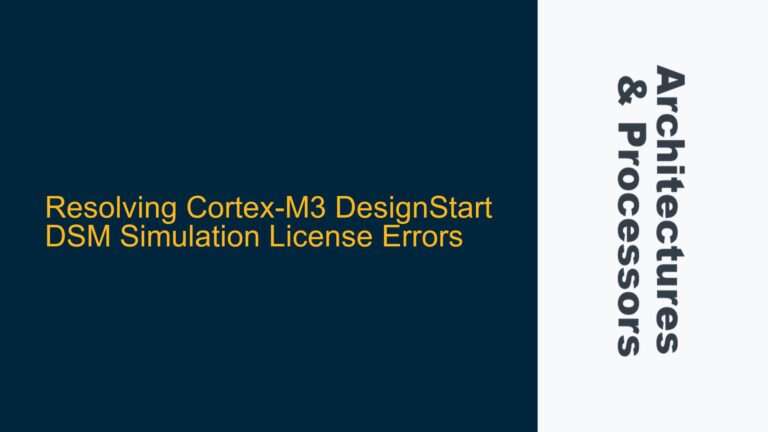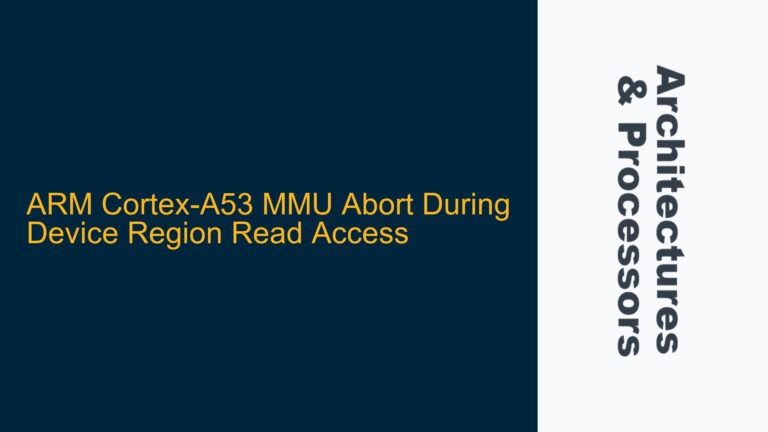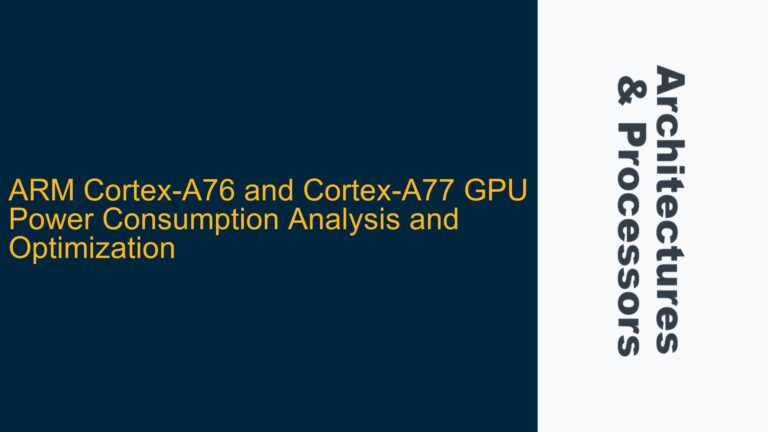ARM Cortex-M33/M35P Bit Banding Absence in ARMv8-M Architecture
The ARM Cortex-M33 and Cortex-M35P processors, based on the ARMv8-M architecture, do not support the bit-banding memory model, a feature that was available in earlier ARM Cortex-M processors such as the Cortex-M3 and Cortex-M4. Bit banding allows individual bits in memory to be directly accessed and modified through a dedicated bit-band alias region, simplifying bit manipulation operations in embedded systems. However, the ARMv8-M architecture, which underpins the Cortex-M33 and Cortex-M35P, omits this feature. This architectural decision reflects a shift in design priorities, focusing on enhanced security, performance, and power efficiency, while deprecating less frequently used features like bit banding.
The absence of bit banding in the Cortex-M33 and Cortex-M35P can be traced back to the ARMv8-M architecture’s streamlined approach. ARMv8-M introduces the TrustZone security extension, which partitions the processor into secure and non-secure states, adding complexity to memory management. Bit banding, while useful, introduces additional hardware complexity and potential performance overhead, which may conflict with the goals of ARMv8-M. Furthermore, bit banding is not a universally required feature, and its removal allows for a more efficient and scalable memory system, particularly in security-sensitive applications.
For developers transitioning from Cortex-M3/M4 to Cortex-M33/M35P, the lack of bit banding may require revisiting code that relies on bit-band operations. This includes tasks such as setting, clearing, or toggling individual bits in memory-mapped peripherals or shared memory regions. While the absence of bit banding may initially seem like a limitation, it encourages the adoption of more portable and maintainable coding practices, such as using atomic bit manipulation instructions or leveraging hardware peripherals for bit-level control.
Implications of Bit Banding Removal on Memory Access and Code Portability
The removal of bit banding in the Cortex-M33 and Cortex-M35P has significant implications for memory access patterns and code portability. Bit banding provided a convenient way to perform atomic bit manipulations without requiring explicit locking mechanisms or complex read-modify-write sequences. Without bit banding, developers must rely on alternative methods to achieve similar functionality, which may involve trade-offs in terms of performance, code size, and complexity.
One of the primary challenges is ensuring atomicity in bit manipulation operations. In the absence of bit banding, developers must use atomic instructions such as Load-Exclusive (LDREX) and Store-Exclusive (STREX) to perform read-modify-write operations safely in multi-threaded or interrupt-driven environments. These instructions provide a mechanism for atomic updates but require careful handling to avoid race conditions and ensure correct behavior. Additionally, the Cortex-M33 and Cortex-M35P support the ARMv8-M instruction set, which includes bit-field manipulation instructions (e.g., BFI, UBFX) that can be used to efficiently manipulate bits within registers.
Another consideration is the impact on code portability. Code written for Cortex-M3/M4 processors that relies heavily on bit banding may require significant modifications to run on Cortex-M33/M35P processors. This includes updating memory access patterns, replacing bit-band operations with equivalent instructions, and ensuring compatibility with the ARMv8-M architecture. While this may increase development effort in the short term, it promotes the use of more standardized and portable coding practices, which can simplify future migrations and maintenance.
The removal of bit banding also affects memory-mapped peripheral access. Many Cortex-M3/M4-based systems use bit banding to directly manipulate peripheral control registers, enabling fine-grained control over hardware behavior. Without bit banding, developers must use alternative approaches, such as accessing entire registers and using bitwise operations to modify specific bits. While this approach is less efficient in terms of memory access, it is more compatible with the ARMv8-M architecture and aligns with modern embedded system design principles.
Alternative Approaches to Bit Manipulation in Cortex-M33/M35P
To address the absence of bit banding in the Cortex-M33 and Cortex-M35P, developers can adopt several alternative approaches for bit manipulation. These methods leverage the ARMv8-M instruction set and hardware features to achieve efficient and atomic bit-level control, ensuring compatibility with the Cortex-M33/M35P architecture.
One effective approach is to use atomic bit manipulation instructions provided by the ARMv8-M architecture. These instructions, such as Bit Field Insert (BFI) and Unsigned Bit Field Extract (UBFX), allow developers to manipulate specific bits within a register without affecting other bits. For example, the BFI instruction can be used to insert a value into a specific bit range within a register, while the UBFX instruction extracts a bit field from a register. These instructions are highly efficient and can be used to replace bit-band operations in many cases.
Another approach is to use the Load-Exclusive (LDREX) and Store-Exclusive (STREX) instructions for atomic read-modify-write operations. These instructions provide a mechanism for performing atomic updates to memory, ensuring that concurrent access from multiple threads or interrupts does not result in data corruption. For example, to set a specific bit in a memory-mapped register, a developer can use LDREX to load the current value, modify the desired bit using bitwise operations, and then use STREX to store the updated value. If the STREX operation fails (indicating a concurrent modification), the process can be retried until successful.
For memory-mapped peripheral access, developers can use bitwise operations to manipulate specific bits within a register. For example, to set a bit in a peripheral control register, the developer can read the current value of the register, perform a bitwise OR operation with a mask representing the desired bit, and then write the updated value back to the register. Similarly, to clear a bit, the developer can use a bitwise AND operation with the inverse of the mask. While this approach requires more memory accesses than bit banding, it is compatible with the Cortex-M33/M35P architecture and can be optimized using compiler intrinsics or inline assembly.
In addition to these software-based approaches, developers can leverage hardware peripherals to achieve bit-level control. Many Cortex-M33/M35P-based microcontrollers include peripherals such as GPIOs, timers, and communication interfaces that provide built-in support for bit manipulation. For example, GPIO peripherals often include set and clear registers that allow individual bits to be set or cleared with a single write operation. By using these hardware features, developers can achieve efficient and atomic bit manipulation without relying on bit banding.
Finally, developers can use compiler intrinsics and libraries to simplify bit manipulation tasks. Many modern embedded toolchains provide intrinsics for atomic operations and bit manipulation, allowing developers to write portable and efficient code without resorting to low-level assembly. For example, the CMSIS (Cortex Microcontroller Software Interface Standard) library provides functions for atomic bit manipulation, such as __atomic_set_bit and __atomic_clear_bit, which can be used to replace bit-band operations in Cortex-M33/M35P-based systems.
In conclusion, while the absence of bit banding in the Cortex-M33 and Cortex-M35P presents challenges for developers accustomed to this feature, it also encourages the adoption of more modern and portable coding practices. By leveraging atomic instructions, bitwise operations, hardware peripherals, and compiler intrinsics, developers can achieve efficient and reliable bit manipulation in ARMv8-M-based systems. This approach not only ensures compatibility with the Cortex-M33/M35P architecture but also promotes code portability and maintainability, aligning with the broader trends in embedded system design.
